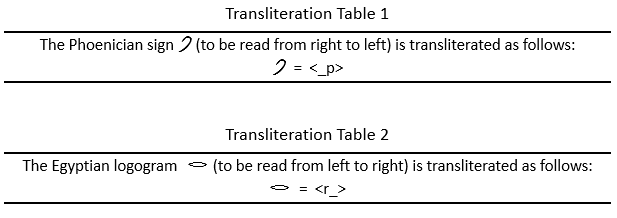6 The reason why a Phoenician sign has multiple sound values
A Phoenician sign is a phonogram that has multiple sound values, which is quite different from what we commonly know of a phonogram. We usually think that a phonogram basically stands for one sound, such as an Akkadian syllabogram or a Japanese kana. To write such syllables as /na/, /ni/, and /nu/, a Phoenician would use one phonogram while a Japanese person would use three. A Phoenician phonogram has multiple sound values because it can ultimately be traced back to a logogram with multiple sound values that was used in ancient Egyptian writing. For example, the Phoenician phonogram <_p> can be traced back to the logogram <r_> used in ancient Egyptian writing. One has to understand how a logogram operates in ancient Egyptian writing before one can understand why <_p> has multiple sound values (this point will be dealt with at greater length in §7).
Ancient Egyptian writing is generally thought to have been influential in the creation of early West Semitic writings, which ultimately gave rise to Phoenician writing. It can be said that without ancient Egyptian writing, there would have been no Phoenician writing with twenty-two signs in the second millennium BC, and that without Phoenician writing, there would have been no Greek alphabetic writing in the first millennium BC. Hence it is important to understand the nature of ancient Egyptian writing before one can understand how the Greek alphabet came about.

26 December 2016
Views: 703